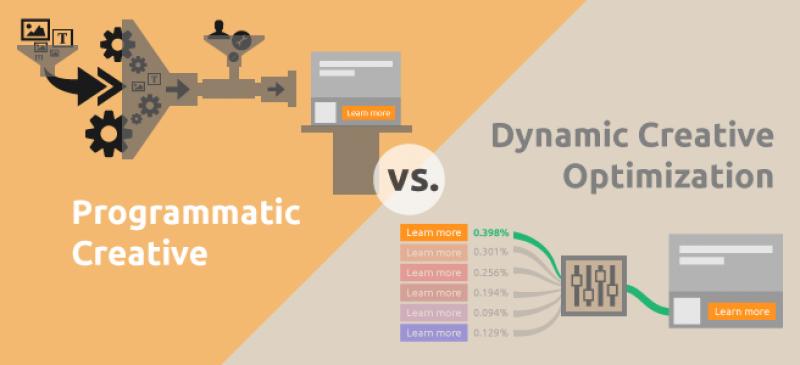


Make people SEE and REMEMBER the brand



Get people to UNDERSTAND and
WANT the brand



Change people's BEHAVIOR and
get them to CONVERT



Take care of people to CONVERT OFTEN and
ADVOCATE the brand
U News
[Data Driven Marketing] Conducting Data-Driven Content Marketing
Since it’s routine to measure return-on-investment (ROI) for online marketing campaigns, marketers are regularly looking at specific metrics and evaluating success based on campaign goals.
Through this regular measurement, data is gathered that can be used to craft future content marketing endeavors that are truly aligned with audience needs. However, many marketers aren’t using this data to drive content development and marketing, even though they’re collecting it day in and day out.
Below are six types of data that can help you determine what an audience prefers, so you can focus your future efforts on the types of content most likely to be successful.
1. Traffic

Though people typically check their site traffic daily, many do not reference their most-viewed pages or blog posts. When a few pages or posts receive much more traffic (and, ideally, conversions, more on that below) than others, it is safe to infer that the audience connects to this type of content (unless the bounce rate is extremely high).
For example, say a career website publishes blog posts offering tips and tricks for job seekers. The blog features articles about job-hunting strategies; on writing a resume and cover letter; and about acing job interviews. However, posts about interviewing consistently have higher traffic than others.
The website owner can use this traffic data to inspire future blog posts about the interview process in specific business segments, as she now knows that interview-focused content brings in the most traffic.
2. Social Metrics

When measuring the success of a content piece, marketers often record social metrics such as Facebook likes, Twitter favorites and retweets, LinkedIn shares, blog post comments and more. Though social data is not always the determining factor of success for a content piece, the data does provide a great deal of audience insight.
Take this example: you’re a website owner who produces multiple content pieces a month of varying types, including infographics, blog posts and free guides. When measuring social metrics, it becomes clear that infographics always get much more likes, retweets and shares compared to weekly blog posts and free guide offers. This data suggests that your audience prefers visual content to written content.
Other information to take into account when analyzing social data is who is digesting specific content. Are the people who are sharing content people who are likely to become customers, or are they just people who thought the content was interesting or amusing? Though volume of certain social metrics can illustrate content popularity, the actual people who are interacting with content tell an even bigger story.
3. Links

Links may be becoming less important for search engine rankings, but the number of links to a content piece can display how useful others find the content to be. Many times, the sheer number of links to a certain page provides insight, though digging deeper to see what types of sites are linking to the content is often more telling.
To start investigating the backlink profile for a specific page, use a backlink analyzer like Open Site Explorer or Backlink History to pull a list of links that are linking to that page. Next, view the sites (and pages) that are linking to pieces of content. A few questions to consider when studying links include:
- How is the content being referenced?
- How reputable are the sites linking to the content piece?
- How relevant are the sites and/or pages?
The answers to these questions can uncover who finds the content useful. From there, you can brainstorm ideas for similar content pieces in hopes of appealing to a very similar audience.
4. Email Metrics

Whether a publisher sends out a monthly email newsletter or reserves email campaigns for special announcements, chances are the performance of sends can provide useful insight that can influence new content marketing projects. When measuring the success of an email campaign, deliverability, unsubscribes, opens and clicks are the main metrics analyzed.
Email deliverability not only illustrates the health of an email list (if more than five percent of contacts are labeled as hard bounces, the list should be scrubbed), it also indicates how many people marked the email as spam.
When a large number of people mark an email as spam, it becomes clear that the content was not in line with the audience’s expectations or needs. Similarly, when you note the number of unsubscribes a certain email campaign produces, you can determine which content was more appealing to subscribers than others.
Next, email opens can show the effectiveness of a subject line. Marketers can assess the open rates of previous campaigns to see which subject lines resulted in the most opens.
Once you’ve determined the emails with the highest open rate, you can look at the language used in the subject line so the next subject line can be crafted based on this data. Additionally, the number of click-throughs can be used to conduct data driven content marketing. By analyzing how many clicks certain links within an email produced, it becomes apparent which content the audience favored — as well as which calls-to-action are strongest.
5. Search & Keyword Data

Many websites have search boxes that allow users to search the website for the information they are looking for. Through analytics programs, site owners can see what terms people are searching for in the website’s search box, along with how often.
If one subject or term is constantly being searched for, this suggests that creating content around this topic will be beneficial to the audience. If content regarding the queries people are submitting to a search box are already available on the website, one might consider where that content is stored and how easy (or hard) it is to be found.
Similarly, keyword data can be used to inspire content projects. Through analytics programs, website owners can view what keywords led visitors to their website, and then create content based off of that data. It makes sense to create content around the keywords people are currently searching for to find a site, as the subject is obviously of interest to the audience.
Additionally, creating useful, relevant and compelling content around those keywords not only provides the audience with the content they want, but it can also help increase search engine rankings, which could lead to more targeted traffic. Though the amount of “not provided” data is increasing (because the search terms of Google users who are signed in are not being reported), the keyword data that is available is useful when brainstorming future content plans.
6. Conversion Rate

Most business marketing initiatives are put into place to increase revenue. To do that, campaigns need to drive website conversions. Though there usually are a number of different conversion points on any given website, a conversion can generally be defined as a visitor who takes an action on a website, beyond just viewing content.
By comparing conversion rates between landing pages, website owners can see what content and calls-to-action produce a higher rate. Once you’ve discovered the landing pages with the highest conversion rates, consider the following:
- What type of content is published on the highest converting landing pages?
- What calls to action are being used?
- Are there any patterns amongst the highest converting pages?
- What are the similarities?
- What are the differences?
Site owners can then reference this data when they’re ready to develop new content to encourage an increase in conversions.
Source: Marketingland
Related Post
Recent Post











